February 2009
Welcome to this issue of the Hardwood Tree Improvement and Regeneration Center E-newsletter. The HTIRC is committed to enhancing the productivity and quality of Central Hardwood Region trees and forests for the economic and environmental benefits they provide. Scientists at the HTIRC are using conventional tree improvement breeding as well as molecular and genetic technologies to improve the wood quality, growth characteristics, and insect and disease resistance of trees like black walnut, black cherry, red and white oaks, butternut and American chestnut.
Research in tissue culture, tree nursery practices, tree plantation establishment and management, and Central Hardwoods silvicultural systems is aimed at increasing the regeneration
success rate for high quality hardwood trees and forests. Some interesting and unusual research areas include examining the potential for propagating trees with “figured” wood: birds-eye maple or curly walnut; and breeding trees that will be an economical source of bio-fuels.
Twice per year, we will attempt to provide interesting and useful information on Central Hardwood trees and forests, as well as sources for additional information and assistance.
Please pass this newsletter along to others who may enjoy or benefit from the information provided. If you would like a closer look at the HTIRC, please visit our web site at: http://www.htirc.org
Causes of Gummosis in Black Cherry
Matthew Ginzel and Brad Barnd – Purdue University, HTIRC
Gummosis is a defensive response of trees in which resinous gum is exuded and deposited on the bark. Gummosis is a serious problem impacting the timber and veneer value of black cherry (Prunus serotina). Black cherry wood is sought after for both fine furniture, cabinets, and paneling. Unfortunately, widespread gummosis caused by insect damage and other factors keeps many black cherry trees from reaching veneer quality, and can reduce their value by as much as 90 percent. The defect appears as dark gum spots, or in some cases, voids in the wood outlined with dark borders (Figure 1). Black cherry is grown commercially throughout its botanical range in eastern North America. Nevertheless, a large portion of the industry is concentrated along the Allegheny Plateau of Pennsylvania, New York, and West Virginia, and the severity of gummosis damage varies both regionally and locally. Insects, fungi, and physical injury can lead to gummosis, but insects appear to be the main cause of gummosis impacting the commercially valuable parts of the tree.
Phloeotribus liminaris, the peach bark beetle, is widespread in the eastern United States and occurs throughout the native range of black cherry. This beetle preferentially attacks stressed or weakened black cherry trees, but at high population densities it is also capable of colonizing healthy trees. Trees in orchards are particularly susceptible to attack. The adults are light brown in color to nearly black, range in size from 1.5 to 2.2 mm, and are sparsely covered in long fine hairs (Figure 2). Peach bark beetles overwinter as young adults beneath the bark of trees. Adults emerge in early spring and females colonize a host by boring through the outer bark and into the phloem. These initial attacks result in small holes through the bark surface and an accumulation of reddish boring dust around the base of the tree. Males soon follow and mating takes place within a gallery constructed by the adults. After mating, females construct a brood gallery that is horizontal to the grain of the wood and deposit 80 to 100 eggs along its length. These galleries are often 2 to 7 cm in length. After eggs hatch, the larvae begin to feed on xylem and phloem parallel to the wood grain at right angles to the egg gallery. Trees are not defenseless against these attacks and attempt to “pitch out” pioneer beetles by exuding large amounts of gum (Figure 3). Gum is produced in response to colonizing adults rather than feeding larvae, and most gum spots are the result of aborted attacks by the beetle.
Damage by larval lesser and greater peachtree borers (Synanthedon pictipes and S. exitiosa, respectively) also causes gummosis in black cherry. These clearwing moths superficially
resemble wasps and have blue-black colored bodies. Female S. pictipes often lay eggs at existing wounds (e.g., physical injury or canker) on the upper portions of the trunk and branches (Figure 4 ), while female S. exitiosa (Figure 5) oviposit on the trunk near the ground. After boring into the tree, developing larvae feed on phloem which results in large amounts of dust-like frass and gum accumulating at the site of the wound. The larvae can grow to almost 25 mm in length. The developing larvae overwinter in the tree and pupate in the spring, and adults emerge from May to June. Mating occurs shortly after the adults emerge, and females are capable of laying as many as 400 eggs.
Management of Insects That Cause Gummosis
Cultural control. Prevention is the most effective means of managing wood-boring pests of
black cherry, including the peach bark beetle. Populations of P. liminaris and other woodborers are largely managed through cultural practices. Specific recommendations are as follows:
- Avoid injury to roots and trunks, and protect trees from sun damage and other stress factors.
- For plantation or yard trees, irrigate during drought and dry summer months if possible. Irrigate around the tree (the area of the outer canopy), and avoid frequent shallow watering around the trunk of the tree.
- Thin stands to increase tree vigor and ability to withstand attack.
- Promptly remove and destroy infested, dying or dead trees or branches before wood-borers emerge and colonize nearby trees.
- Remove freshly cut wood, which can provide an abundant breeding source for some woodborers.
- Timing of pruning is also important; do not create fresh prune wounds during the time adult insects are flying in spring and early summer.
Chemical control. Proper monitoring is essential to correctly time pesticide applications. Virtually no insecticide will kill larvae tunneling under the bark. Chemical treatments are generally applied to healthy trees and target the colonizing insects as they chew into the bark to lay eggs. Systemic insecticides are rarely effective at saving seriously infested trees. By the time damage is evident, the insects have often already completed their development and dispersed. Landowners are encouraged to consult their local Department of Natural Resources or university Extension personnel to confirm the identity of a suspected insect pest and for current management tactics and chemical control measures.
For more complete information on gummosis in black cherry, see the HTIRC publication Causes of Gummosis in Black Cherry
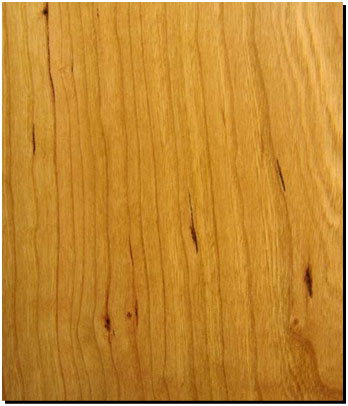
Figure 1.Gum spots in black cherry lumber
(Chip Morrison)
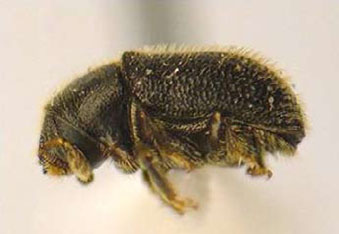
Figure 2. Adult peach bark beetle. (Bradley D. Barnd)
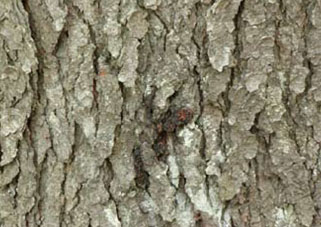
Figure 3. Gum spot caused by peach bark beetle.
(Pennsylvania Department of Conservation and
Natural Resources – Forestry Archive, Bugwood.org)
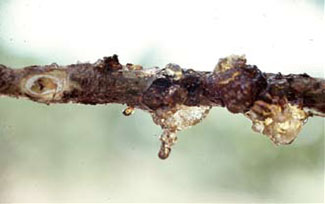
Figure 4. Gummosis caused by lesser peachtree
borer. (Carroll E. Younce, USDA Agricultural
Research Service, Bugwood.org)
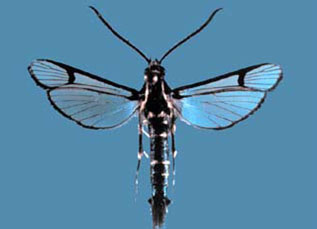
Figure 5. Male greater peachtree borer. (Wendell
Snow, USDA Agricultural Research Service,
Bugwood.org)
Enrichment Planting for Improving Oak Regeneration
Research by Doug Jacobs, Rob Morrissey, and Ron Rathfon – Purdue University
Naturally regenerating oaks, particularly on more productive sites, has been a vexing management challenge for foresters, wildlife managers, and landowners in the Central Hardwood Region. Oaks produce bumper seed crops infrequently. Light to moderate seed crops are often entirely consumed by the many species of wildlife that utilize acorns, and occasional seed failures, like the red oak in the 2008 season, occur. Seedlings that do become established are often doomed by competition from overstory trees or faster growing neighbors like tuliptree. It may not always be possible to wait for a bumper seed year to apply the forest management techniques that can help oak regeneration become established and competitive with other trees on the site. Planting oak seedlings to provide a more reliable source of oak regeneration may be an option in these cases.
Enrichment planting, an artificial regeneration technique designed to improve the proportion of a desired species during regeneration, is one way of increasing the successful regeneration of oaks on most sites. This method is most often used in conjunction with certain even-aged harvesting methods, such as shelterwood, or with an uneven-aged harvesting method called group selection. In the shelterwood method, the forest stand density is reduced by harvesting or killing understory and mid-story trees that increase the amount of sunlight reaching the forest floor. Some main canopy trees may be removed, but recent research indicates a continuous upper canopy will prevent shade intolerant trees like tuliptree from invading, but still provide enough light to allow the moderately shade tolerant oaks to germinate and become established.
Here is a suggested process to follow if you are considering using enrichment planting to improve your chances for oak regeneration.
Assessment: assess site quality, existing and potential natural regeneration, competing vegetation, and deer damage potential.
As the site quality increases, competing vegetation will become more of a problem in establishing and maintaining oaks. Extremely poor sites may not provide enough soil productivity to allow seedlings to become established. One study recommended sites with a site index range of 60 to 79 for red oak as ideal. You can get site index information from Natural Resources Conservation Service soil surveys or the Web Soil Survey: http://websoilsurvey.nrcs.usda.gov/
Some sites may have existing natural oak regeneration or the potential to produce sprouts from existing oak stems. It is typically recommended that in order to successfully regenerate oak stands, at least 400 oak seedlings per acre over 4 feet tall be present before overstory removal. If natural regeneration is not likely to meet this threshold, planting oak seedlings is a way to provide oak regeneration.
Competing vegetation in the understory and mid-story may need to be controlled to ensure sufficient light reaches the relatively slow-growing oak seedlings and provide a competitive advantage over surrounding vegetation.
The potential for deer browsing damage to seedlings should be evaluated. If deer browse damage is likely, control measures like fencing or deer reduction hunting may be needed to allow oaks to become established.
Harvesting: The shelterwood harvesting system uses one or more harvests to provide increased light to the forest floor, followed by a removal of the overstory trees once the new generation of seedlings is established. A properly applied shelterwood harvest system will increase the amount of sunlight reaching the forest floor to a level that will support oak seedling survival and growth. It is important that the initial harvest not provide so much light that fast-growing competitors like tuliptree can become established and grow past the oak. The stand should be thinned from below by removing understory and some intermediate crown class trees down to a diameter of 1.5 inches. Some trees may be sold for products, but many others may need to be cut or girdled to provide the appropriate amount of density reduction: about 20% of the stocking. Avoid making openings in the canopy that will favor establishment of competing tree species, particularly on highly productive sites.
Site Preparation: Vegetation that could compete with planted oak seedlings will need to be controlled to allow the seedlings to become established. Some plants, like grapevines and invasive trees and shrubs, should be controlled prior to harvesting, so they don’t have the opportunity to respond to the increased light after the first shelterwood cut. Any undesirable trees, shrubs, and grapevines should be treated with herbicide to reduce the chance of resprouting. Increased light may encourage herbaceous plant growth, that may need to be controlled at the time of seedling planting.
Planting: Once the initial shelterwood cut is made and the site has been prepared, oak seedlings may be planted. Be sure to plant seedlings that are from local or regionally adapted sources. Bare-root hardwood seedlings should have a shoot height of at least 18 inches, a root collar (the part of the root just below ground level) of at least ¼-inch thick, preferably ½-inch or larger. Larger seedlings with greater size root collars are needed when no site preparation or weed control will be used or where site quality is high and yellow-poplar competition is present. Containerized seedlings with large root systems may be another option for planting stock. The number of seedlings to plant per acre will depend on the amount of oak and other desirable natural regeneration on the site, and the management objectives for the stand. It is recommended that at least 400 oak seedlings 4.5 feet tall or taller be established per acre at the time of overstory removal. Planting should be done when seedlings are dormant, late winter through early spring. Proper seedling handling and planting techniques are crucial to seedling survival in these competitive environments. Also, for planting help, you may refer to FNR-210 Planting Hardwood Seedlings in the Central Hardwood Region.
Maintenance and Release: After seedlings are planted, they should be monitored until they are established and ready for release. If monitoring and appropriate management are not maintained after planting, seedlings may be attacked by animals and insects, or overwhelmed by competing vegetation. The HTIRC publication Diagnosing and Controlling Wildlife Damage in Hardwood Plantations provides information on how to control wildlife damage in tree plantings. Recommendations for controlling competing vegetation can be found in Weed Competition Control in Hardwood Plantations. Once an adequate number of seedlings have become established, after growing to 4.5 feet in height or taller, depending on the sight and level of competition, the overstory trees can be removed in a harvest, releasing the oak seedlings to occupy the site. Continued monitoring may be needed as the stand develops to determine when thinning or crop tree release treatments should be applied.
Regenerating oak on productive sites requires a commitment to and careful application of management practices in the early stages of development to ensure the successful establishment of oaks and ensure that your efforts are not in vain. Enrichment planting is one of several tools land owners and managers can use to increase the success rate for oak regeneration. More details on oak enrichment planting is available from the HTIRC publication Enrichment Planting of Oaks by Morrissey, Seifert, King, and Selig.
Additional information on using shelterwood harvesting systems to regenerate oak can be found in the University of Kentucky publication Oak Shelterwood: A Technique to Improve Oak Regeneration by Jeff Stringer.
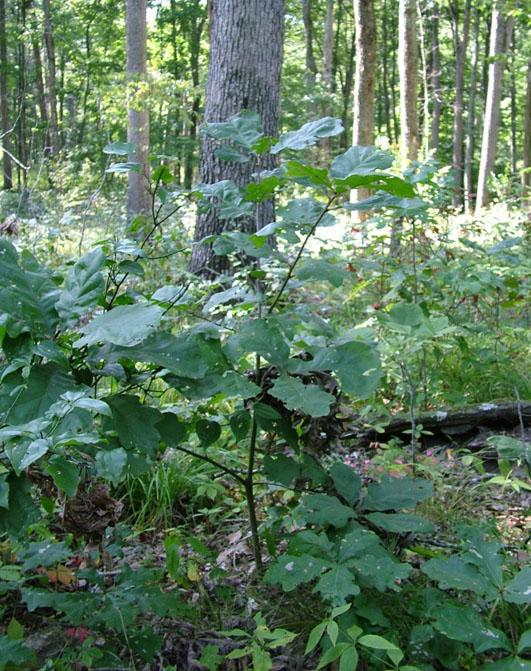
Overstory removal should not take place until oak seedlings are 4.5 feet tall or taller.
Early Success in Tree Plantings: Compatibility
Lenny Farlee – Purdue University, HTIRC
Compatibility is really about good information collecting and planning. Understanding the characteristics of your selected tree and shrub species, the site you plan to plant, and your objectives for the planting will help you avoid problems like poor survival or growth due to selecting the wrong species for the site. You want to confirm that your selected tree species are compatible with the site, before you make the multi-decade commitment of planting those trees.
The best place to start this analysis is with matching the trees with the site you plan to plant. Selecting trees and seed sources native to or adapted to your region means you shouldn’t have problems with winter hardiness or prevailing temperature and precipitation patterns. If you plan to plant trees not native to your region, check the growth requirements, referred to as silvics, for the tree species in the Silvics of North America at http://nrs.fs.fed.us/pubs/1006 . The USDA plant hardiness zone for your area can be found at http://www.usna.usda.gov/Hardzone/index.html . Moving trees or seed sources too far from their original location may result in hardiness issues related to upper and lower temperature extremes and precipitation patterns, resulting in poor tree performance. You don’t want to plant trees and find out ten or twenty years later that they can’t tolerate the occasional extreme low temperature or extended drought that might occur in your area.
Once you have established that your selected trees are hardy for your area, be sure they are adapted to the soils present on your site. Soil depth, texture, drainage, and fertility will determine what species will survive and thrive on the site. Some species, like black walnut, have relatively specific soil requirements for good long term growth, while others, like bur oak, can perform well on a wide variety of sites. You can get soils information for your planting sites from the Natural Resources Conservation Service (NRCS) in several ways. Most counties have a soil survey available in book or CD format at the County NRCS office. NRCS personnel may be able to develop a soils map and report covering your management interests for the property. The NRCS also offers web- based soils maps and information on the Web Soil Survey: http://websoilsurvey.nrcs.usda.gov/
On the Web Soil Survey you can create a map of your planting area and develop reports on the soil types and recommended species to plant for each soil type. This information will help you decide what tree species will have the best chance to do well on your site. In addition, you can explore the suitability of your soils for a variety of other practices including wildlife habitat and wetlands development.
Your local foresters and NRCS soil conservationists can also provide you with guidance on the best trees for your soils, so take advantage of their experience when planning your planting.
Some other issues to consider are the potential of your site for flooding, water ponding, or drought. Some bottomland soils that are normally well-drained can be flooded or ponded for extended periods as well. Only species that will tolerate extended soil saturation can survive here. Some sites with shallow or sandy soils may be subjected to exceptional water stress during droughts. Since trees have such a long lifespan, It’s important to consider what extreme conditions might occur, not just the normal conditions found in most years.
Planning ahead and understanding the needs and limitations of your trees and your planting site will increase your chances for a successful tree planting.
Some HTIRC publications that may be of help include Planting Hardwood Seedlings in the Central Hardwood Region , Regenerating Hardwoods in the Central Hardwood Region: Soils, Native Hardwood Trees of the Central Hardwood Region
Opportunities for Forest Landowners in the EQIP Program
The Environmental Quality Incentives Program (EQIP) may provide some additional opportunities for landowners interested in forest management and tree planting to access cost sharing assistance. The EQIP program provides assistance to farmers, ranchers and forest landowners through a wide variety of conservation practices, so you may be able to address other conservation issues on your property, while also doing timber stand improvement to increase the productivity and value of your forest land. Stop in your local Natural Resources Conservation Service (NRCS) office to find out more about eligibility and sign-up procedures. To find your local NRCS office you can search using their office locator .
American Forest Management, Inc. Partners with HTIRC
American Forest Management, Inc. recently became a partner with the Hardwood Tree Improvement and Regeneration Center, helping HTIRC continue our research efforts to produce high quality hardwood trees and healthy forests. AFM is one of the largest forest resource consulting and management firms in the US providing a complete range of forestry services for a wide variety of clients. We appreciate the support of all our partners, and welcome AFM and their contribution to hardwood tree improvement.
Getting Ready for Tax-Time
If you have done reforestation tree planting or sold timber on your property in 2008, you may be able to reduce your income tax liability. Plantings done for timber production may qualify for a tax credit and amortization of expenses. Timber sale income may qualify for capital gains tax rates and some of the income can be offset by establishing a cost basis for the timber and assigning a depletion allowance, thus reducing tax liability. Here are some resources that can help you understand your options.
An excellent reference for tax management for forest landowners is the National Timber Tax website: http://www.timbertax.org
If you want to learn more about tax issues associated with tree planting, refer to the HTIRC publication Financial and Tax Aspects of Tree Plantings:
http://www.agriculture.purdue.edu/fnr/HTIRC/pdf/publications/FNR-214-W.pdf
Some publications that can help you with forest management and timber sale tax issues include:
How to Treat Timber Sale Income:
Minimizing Federal Income Tax for Forest Landowners:
Highlights
Have questions about tree planting? This series of publications can be viewed or downloaded free of charge. Planting and Care of Fine Hardwood Seedlings
Van Eck Scholarships available for graduate research with the HTIRC.
Emerging Issues in White Tailed Deer Management and Conservation, Feb. 25-27, 2009 Lafayette, Indiana.
Ask the HTIRC: email Lenny Farlee with your tree planting and forest management questions and we’ll help you find the answers.
